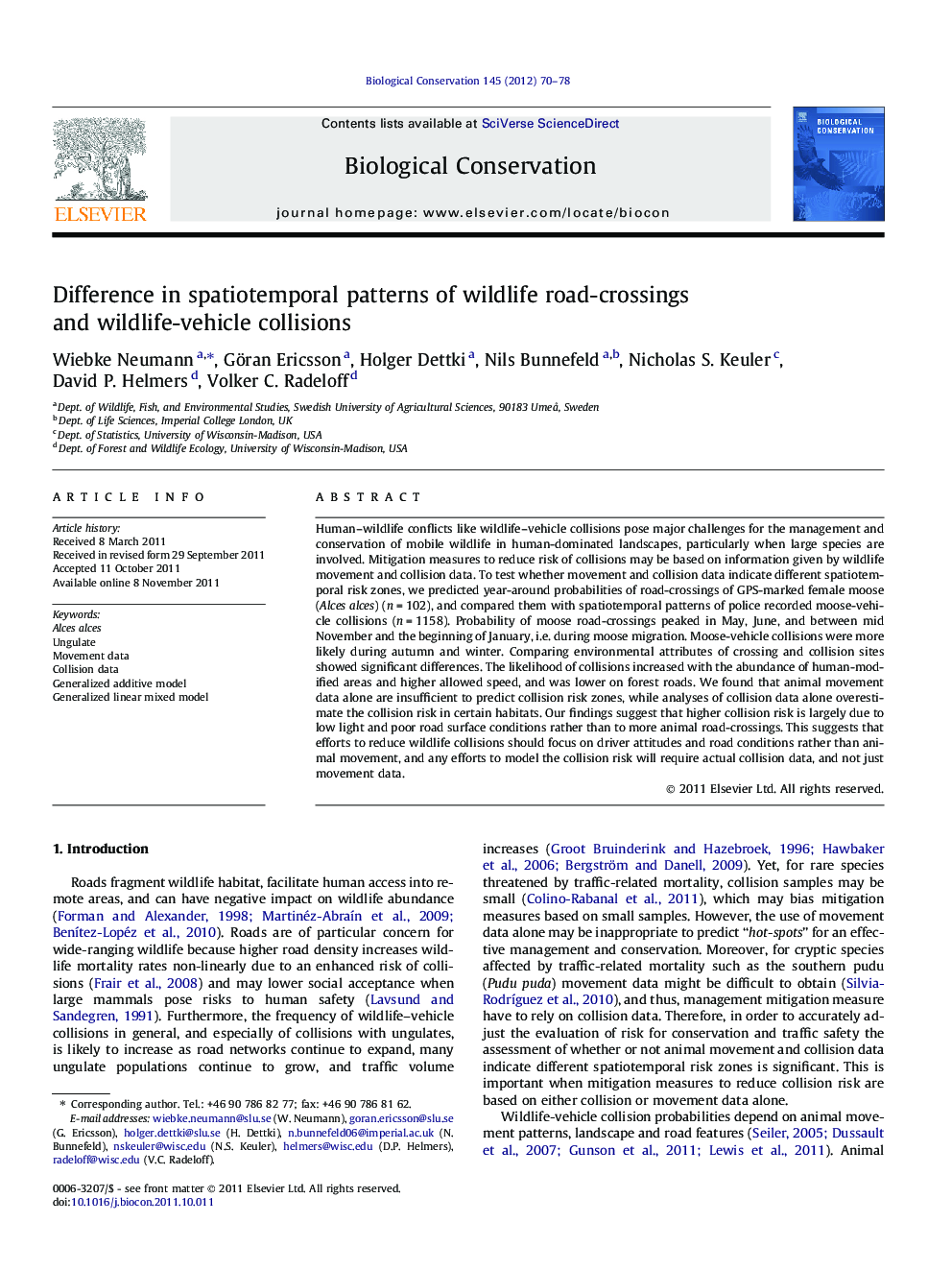| Article ID | Journal | Published Year | Pages | File Type |
|---|---|---|---|---|
| 4385352 | Biological Conservation | 2012 | 9 Pages |
Human–wildlife conflicts like wildlife–vehicle collisions pose major challenges for the management and conservation of mobile wildlife in human-dominated landscapes, particularly when large species are involved. Mitigation measures to reduce risk of collisions may be based on information given by wildlife movement and collision data. To test whether movement and collision data indicate different spatiotemporal risk zones, we predicted year-around probabilities of road-crossings of GPS-marked female moose (Alces alces) (n = 102), and compared them with spatiotemporal patterns of police recorded moose-vehicle collisions (n = 1158). Probability of moose road-crossings peaked in May, June, and between mid November and the beginning of January, i.e. during moose migration. Moose-vehicle collisions were more likely during autumn and winter. Comparing environmental attributes of crossing and collision sites showed significant differences. The likelihood of collisions increased with the abundance of human-modified areas and higher allowed speed, and was lower on forest roads. We found that animal movement data alone are insufficient to predict collision risk zones, while analyses of collision data alone overestimate the collision risk in certain habitats. Our findings suggest that higher collision risk is largely due to low light and poor road surface conditions rather than to more animal road-crossings. This suggests that efforts to reduce wildlife collisions should focus on driver attitudes and road conditions rather than animal movement, and any efforts to model the collision risk will require actual collision data, and not just movement data.
► We tested if wildlife movement and collision data indicate different risk zones. ► We compared year-around moose road-crossings and moose-vehicle collisions. ► Distributions differed in space and time. ► Poorer light and road conditions may increase collision risk, not more moose on roads.
